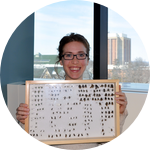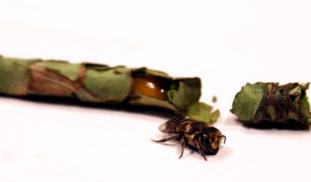197
-1
0
Like?
Please wait...
About This Project
Alfalfa leafcutter bees (ALBs) are important crop pollinators that nest in aboveground cavities (e.g. straws). Much of the biology of these bees can be understood by studying their nest architecture. On farms, these bees are exposed to pesticides which can impair their ability to build nests and reproduce. We will examine how exposure to prevalent insecticides, neonicotinoids, affects ALB nesting behaviors by studying nest structure and size under different insecticide treatments.
More Lab Notes From This Project

Browse Other Projects on Experiment
Related Projects
How do polar bears stay healthy on the world's worst diet?
Polar bears survive almost entirely on seal fat. Yet unlike humans who eat high-fat diets, polar bears never...
Uncovering hidden insect diversity associated with a likely undescribed gall-forming midge
Does a likely undescribed species of gall-forming midge (pers. comm. Ray Gagné) on Eriodictyon plants (Yerba...
Macrofungi of the California archipelago
The eight islands of the California Archipelago are a well-studied biodiversity hotspot — but we know almost...

